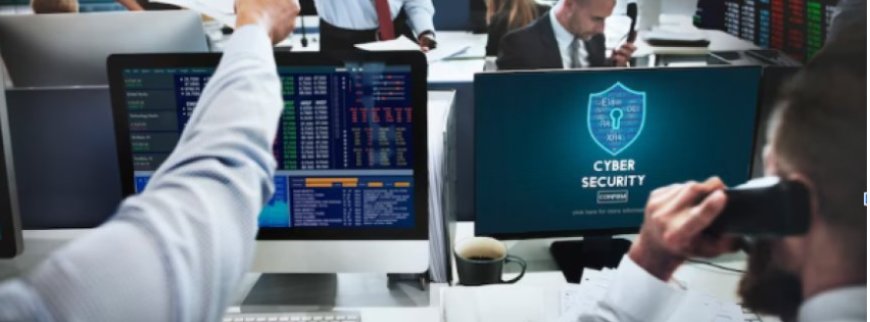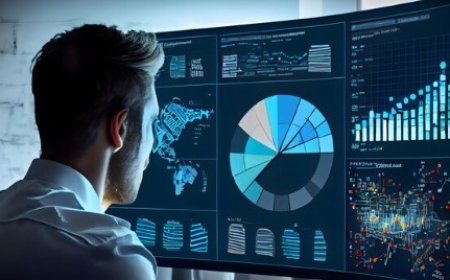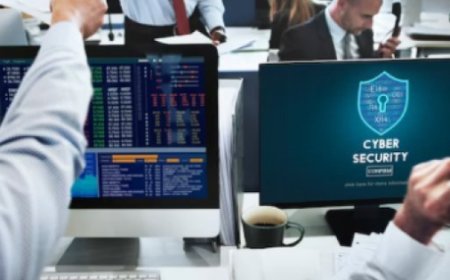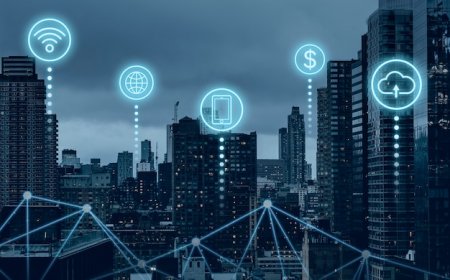User Cybersecurity in the Workplace: Building a Safe Digital Environment
Enhance workplace cybersecurity with robust measures. Safeguard sensitive data and prevent cyber threats. Create a secure digital ecosystem for your team's safety

As an employee, you arrive at work and sit down at your desk to start your day. You open your computer and begin to check your emails, but notice a strange message from an unknown sender. You hesitate to open it, knowing that cyber threats are becoming more common in the workplace. However, you also don't want to miss an important message from a colleague or client. This is just one example of the many situations that employees face when it comes to cybersecurity in the workplace. Building a safe digital environment is crucial to protect sensitive information and prevent cyber attacks. It's important for companies to provide training and resources to their employees to ensure they are equipped to handle these situations and know how to identify potential threats. By working together, we can create a safer and more secure workplace for everyone.
Maintaining the safety of digital assets and information in the workplace can be a challenging task, especially with the ever-changing surroundings of cybersecurity threats. From phishing scams to ever-changing surrounding attacks, there are numerous challenges that organizations must get around to build a truly safe digital environment. Without proper planning and implementation of cybersecurity measures, businesses risk losing sensitive data, damaging their reputation, and facing legal consequences. That is why, it is crucial for companies to stay up-to-date with the latest cybersecurity trends and invest in robust security solutions to protect their digital assets and maintain a safe workplace environment.
How can organizations effectively fortify their digital environments against the diverse array of cyber threats prevalent in today's workplace? What strategies and best practices can they adopt to mitigate risks and create a culture of cybersecurity awareness among employees?
Seven Pillars of Strong Cybersecurity
1. Creating a Comprehensive Cybersecurity Policy:
Definition: A cybersecurity policy serves as the backbone of an organization's security posture. It's a set of guidelines and rules that define how employees should use technology, handle sensitive data, and respond to security incidents.
Importance: This policy acts as a roadmap for maintaining a secure digital environment. It outlines acceptable practices, sets expectations for employee behavior regarding technology use, and provides clear steps to follow in case of a security breach. Regular updates are essential to keep the policy aligned with evolving threats and technologies. This ensures that the organization stays resilient against emerging risks and complies with changing regulations.
2. Employee Training and Awareness Programs:
Purpose: These programs aim to educate and empower employees about cybersecurity risks and best practices. They cover topics like recognizing phishing emails, avoiding malicious websites, using strong passwords, and reporting suspicious activities.
Significance: Employees are often the first line of defense against cyber threats. Educating them about potential risks and training them to identify and respond to threats effectively reduces the likelihood of successful attacks. Engaging, regular training sessions create a culture of security awareness, fostering a workforce that actively contributes to the organization's cybersecurity efforts.
3. Implementing Access Controls and Least Privilege Principles:
Explanation: Access controls define who can access specific resources within an organization's network. The principle of least privilege ensures that employees have access only to the resources necessary for their job roles.
Benefit: Limiting access rights reduces the attack surface, making it harder for unauthorized individuals or cyber attackers to access critical data or systems. By strictly adhering to least privilege principles, organizations minimize the potential impact of breaches or insider threats, maintaining a more secure environment.
4. Robust Authentication Mechanisms:
Usage: Strong authentication mechanisms, such as multi-factor authentication (MFA), require users to provide more than just a password to access systems. Additionally, implementing strong password policies encourages the use of complex and unique passwords.
Advantage: MFA adds an extra layer of security by requiring multiple forms of verification, like a code sent to a mobile device, along with the password. This significantly reduces the risk of unauthorized access, even if passwords are compromised. Strong password policies further enhance security by making it tougher for attackers to crack passwords.
5. Regular Updates and Patch Management:
Necessity: Software updates and patches address known deficiencies and bugs in software or applications.
Importance: Timely installation of updates and patches is critical. It prevents the exploitation of known risk factors by cyber attackers. Regularly updating systems and software not only strengthens security but also ensures compliance with industry standards and regulatory requirements.
6. Incident Response and Recovery Planning:
Preparation: Incident response plans outline step-by-step procedures to follow when a security incident occurs. Regular testing and refinement of these plans ensure their effectiveness in actual time situations.=
Significance: Having a well-prepared incident response plan minimizes the impact of security incidents by enabling a swift, organized, and effective response. It helps contain the breach, mitigate damages, and facilitate a faster recovery process, reducing downtime and potential losses.
7. Continuous Monitoring and Auditing:
Function: Continuous monitoring involves using tools and systems to actively observe networks, systems, and applications for any signs of potential threats or abnormalities. Regular security audits assess the effectiveness of security controls and policies.
Purpose: Continuous monitoring provides real-time threat detection, allowing organizations to identify and respond to security incidents promptly. Regular audits help in evaluating the strength of existing security measures, identifying risk factors or weaknesses, and ensuring compliance with industry standards or regulations.
Important Cybersecurity Practices for Strong Digital Defense
Use MFA (Multi-Factor Authentication):
-
Why it's important: MFA adds an extra layer of security by requiring additional verification, like a code sent to your phone, beyond just entering a password. It significantly strengthens your account's defense against unauthorized access.
-
How to use it: Enable MFA wherever possible, especially for crucial accounts like email, financial services, or work-related systems. Most platforms offer MFA settings in their security options.
Update Software:
-
Why it's important: Regularly updating software and applications ensures that known deficiencies and weaknesses are fixed. Ignoring updates can leave your devices and systems open to exploitation by cyber attackers.
-
How to manage it: Set your devices to update automatically or check for updates manually on a regular basis. This includes operating systems, apps, antivirus software, and firmware.
Beware of Phishing:
-
Why it's important: Phishing emails and malicious links trick users into revealing sensitive information or installing malware. Being cautious and recognizing these scams is vital.
-
How to spot them: Be wary of unexpected emails, especially those with urgent requests or unfamiliar senders. Always hover over links before clicking to preview the URL and verify the sender's email address.
Strong Passwords:
-
Why it's important: Weak passwords are easy for hackers to guess. Creating strong, unique passwords for each account significantly bolsters your defense against unauthorized access.
-
How to create strong passwords: Use a mix of uppercase and lowercase letters, numbers, and special characters. Consider using a reliable password manager to generate and store complex passwords securely.
Back-Up Data:
-
Why it's important: Data loss due to cyber attacks or system failures can be devastating. Regularly backing up your important files ensures you won't lose critical information irreversibly.
-
How to back up data: Back up files regularly to external drives, cloud storage, or secure servers. Automate backups wherever possible to ensure consistency and reliability.
In summary, creating a secure digital environment in the workplace is of the greatest importance in the following technologically advanced world. Cybersecurity plays a crucial role in protecting sensitive information, avoiding theft of data, and protecting both the organization and its employees from potential threats. By implementing strong security measures, such as strong passwords, regular software updates, and employee training on best practices, businesses can significantly reduce the risk of cyber attacks. It is essential for organizations to prioritize cybersecurity and continuously adapt to the changing threat scenery to ensure a safe and secure digital workplace for all.







